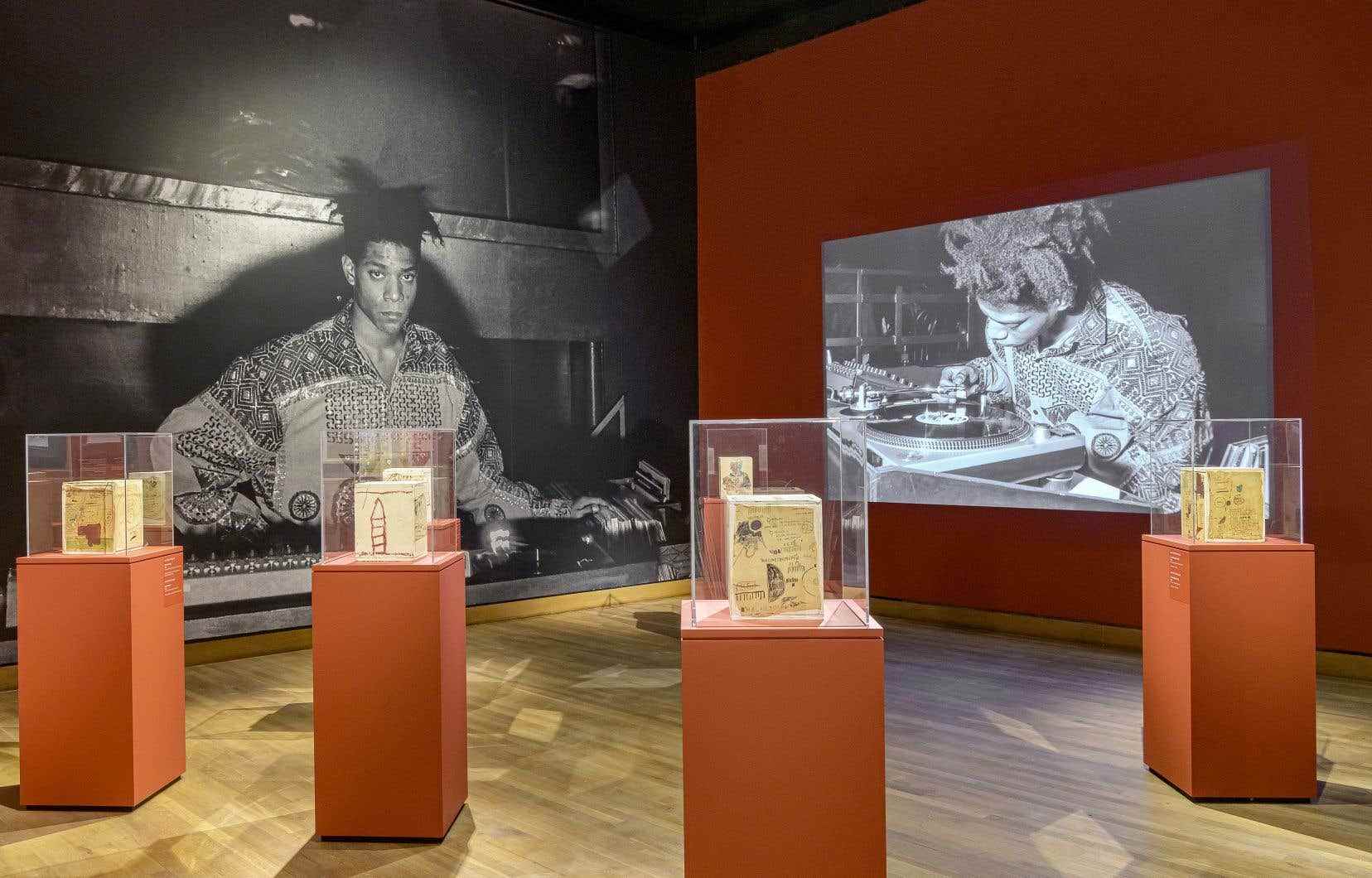This text is part of the special section Museums
With its new exhibition event, the Montreal Museum of Fine Arts (MMFA) sheds new light on Basquiat’s work through the different musical currents that punctuated his brief existence. To see and to listen to.
In the grand ball of retrospectives devoted to Jean-Michel Basquiat, music had never before been placed at the center of an exhibition in this way. For its third collaboration with the Musée de la musique de la Philharmonie de Paris (after the Chagall and Miles Davis exhibitions in 2017 and 2010), the MMFA offers us an exciting dive into the musical universe that has shaped the work of the comet of contemporary art.
At full volume. Basquiat and music offers much more than a soundtrack illustrating the all too short existence of the artist who died of an overdose at the age of 27, one evening in 1988, when he was about to attend a concert by Run-DMC and Public Enemy. The exhibition acts as a real revealer of meaning, where rap, jazz, opera and punk rock are presented as keys to better decode Basquiat’s work.
Through his paintings and other compositions, the king of neo-expressionism transcribed the rhythms and sounds that made New York vibrate in the 1980s. Night owl, Basquiat hung out with Andy Warhol, Keith Haring and company on the tracks of the Mudd Club, CBGB and Area, where he was the privileged witness to the emergence of musical currents such as no wave and hip-hop, which found a sounding board among his works.
Paintings that make a lot of noise
A graffiti artist in his early days, the artist who covered the walls of Lower Manhattan with anti-capitalist slogans under the name of SAMO mastered the musicality of words like no one else. A section of the exhibition is devoted to the way in which Basquiat made sounds visible, whether through letters, which for him were so many musical notes, or through symbols and onomatopoeias, which came to punctuate some of his paintings.
Music has also greatly influenced his creative process. There was a great cacophony in his workshop-studio in Great Jones Street, between the records he listened to at full volume and the television which was often on. A great admirer of Charlie Parker and Miles Davis, Basquiat has developed real habits of jazzman in the way of approaching his art. Like the founding fathers of the bebop movement, he did not hesitate to give free rein to improvisation and to break well-established codes.
His famous copy-paste method, used to reproduce the images, echoes the musical technique of sampling that has made hip-hop producers happy. Himself a DJ at times, Basquiat was much more than a simple spectator of the bubbling music scene of his time. This great music lover, who owned a collection of over 3,000 records, signed several flyers with his own hand to promote the music groups he liked and the nightclubs he frequented.
A funny machine
Basquiat mainly practiced music himself. This is another facet, less known to the general public, which is highlighted in the rich exhibition put on by the MMFA’s chief curator, Mary-Dailey Desmarais, music historian Vincent Bessières, and the historian of art Dieter Buchhart. At the end of the 1970s, the artist founded the group Gray with Michael Holman, an experimental formation within which he declined his poems while playing the clarinet and the synth.
A musician with a rebellious soul, Basquiat also distinguished himself by landing on stage with a terribly noisy machine-carriage, during a concert celebrating the birthday of art dealer Leo Castelli at the Rock Lounge in New York in 1980. The odd contraption custom designed by experimental instrument maker Peter Artin has since disappeared. A unique copy of the original, the reproduction exhibited at the MMFA is certainly one of the curiosities of this colorful and sound retrospective.
At full volume. Basquiat and music. At the Montreal Museum of Fine Arts until February 19, 2023.
Immersed in Basquiat’s New York
This special content was produced by the Special Publications team of the To have to, relating to marketing. The drafting of To have to did not take part.
